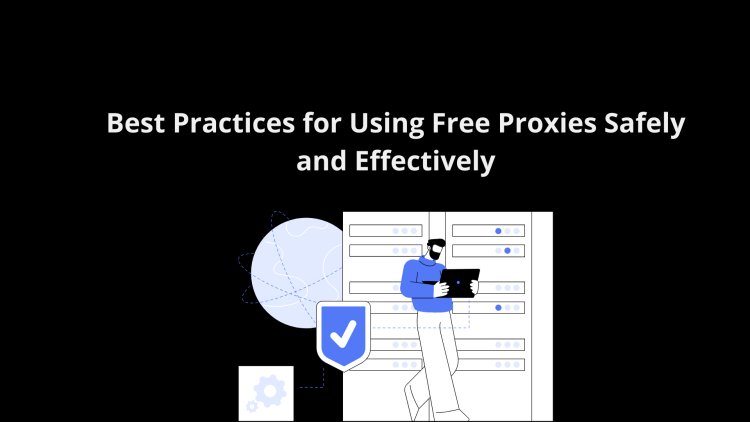Best Practices for Using Free Proxies Safely and Effectively
Understand reverse proxies and their role in server security. Learn how they protect servers, enhance performance, and manage traffic efficiently for secure online operations.

Best Practices for Using Free Proxies Safely and Effectively
Free proxies can be an attractive option for users seeking anonymity or access to restricted content without spending money. However, they come with potential risks, including data security concerns and unreliable performance. By following best practices, you can maximize the benefits of free proxies while minimizing the associated risks. Here's a guide to using free proxies safely and effectively.
Understanding Free Proxies
Free proxies are publicly available servers that allow users to route their internet traffic through an alternate IP address. They are often used for:
- Bypassing geo-restrictions.
- Enhancing online anonymity.
- Performing lightweight web scraping tasks.
However, since they are free, they may lack the reliability, speed, and security of paid proxy services.
Risks Associated with Free Proxies
-
Data Privacy Concerns:
Free proxies might log your data or sell it to third parties. -
Unreliable Performance:
Public proxies often suffer from slow speeds and frequent downtimes. -
Lack of Encryption:
Many free proxies don’t encrypt your traffic, leaving your data exposed. -
Potential Malware Threats:
Some free proxies may host malicious software or expose users to phishing schemes.
Best Practices for Using Free Proxies
1. Research the Proxy Provider
- Use trusted websites or reviews to identify reliable free proxy providers.
- Avoid unknown or suspicious services that lack transparency about their operations.
2. Test for Speed and Stability
- Verify the connection speed and stability of the proxy before committing to extended use.
- Use tools like "ping" tests or online proxy speed checkers.
3. Avoid Entering Sensitive Information
- Do not log into accounts, perform financial transactions, or share personal information while using a free proxy.
- Use them only for non-sensitive tasks, such as browsing publicly available content.
4. Use HTTPS Connections
- Always ensure that the websites you visit use HTTPS to encrypt data between your browser and the server.
- This adds an extra layer of security when using untrustworthy proxies.
5. Combine Free Proxies with VPNs or Tor
- Use a VPN or the Tor network in conjunction with a proxy to enhance security and anonymity.
- This reduces the risk of data interception by the proxy server.
6. Rotate Proxies Frequently
- Use different proxies for each session to avoid detection and reduce the risk of overloading a single proxy.
- Proxy rotation tools can automate this process.
7. Monitor Proxy Performance
- Regularly check the proxy's IP reputation using tools like IPQualityScore or AbuseIPDB.
- Avoid proxies with flagged or blacklisted IPs.
8. Limit Usage to Low-Risk Activities
- Free proxies are best suited for tasks like bypassing simple geo-restrictions or performing lightweight browsing.
- For critical or high-risk activities, opt for a paid proxy service.
9. Use Browser Extensions Carefully
- Some free proxies offer browser extensions for easier setup. Ensure these extensions come from a reputable source and are free from malicious code.
10. Be Aware of Legal Implications
- Understand the legality of using proxies in your region.
- Ensure that your activities comply with local laws and the terms of service of the websites you visit.
When to Consider Paid Proxies
If you require:
- Enhanced Security and Privacy: Paid proxies often come with encryption and no-logging policies.
- Consistent Performance: Premium services provide stable connections and high speeds.
- Customer Support: Paid providers offer technical support to address any issues.
Switching to a reputable paid proxy service can save time and offer peace of mind for sensitive tasks.
What's Your Reaction?


















